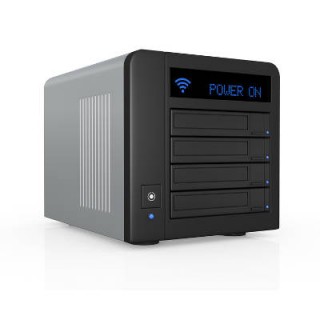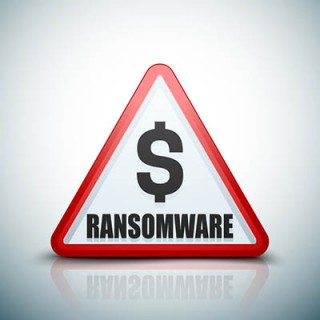Technology is a major factor that can determine your business’s fate, yet some organizations don’t necessarily recognize IT problems before they make themselves apparent. Unfortunately, by the time you notice any issues with your IT, they are usually turning into problems that cause your business considerable troubles. To keep issues from evolving into major problems, it’s up to you to ensure that your technology is maintained in a proactive fashion.
Infradapt Blog
Subcategories from this category:
IT Blog, Best Practices, Technology, Press Releases, Alerts, Miscellaneous, How To, Security, Business, Cloud, Off Topic/Fun, Uncategorized, Tip of the WeekA new study by Disaster Recovery on the state of data backup for enterprises yields some rather disappointing results, particularly when it comes to the percentage of companies not enacting data backup best practices. Companies that fail to continuously backup their data, or fail to even back it up at all, are gambling with their future.
A new malware swept across the globe Tuesday, incorporating facets of many ransomwares that have made headlines recently. While it originally appeared to be a variant of the Petya ransomware, it has been determined that it shares more in common with WannaCry. However, “NotPetya,” as it has been named, has a few additional features that experts say make it worse than either of its predecessors.
Why NotPetya Isn’t Really a Ransomware
The first clue that researchers had that NotPetya had a different motivation was the fact that the ransom only demanded the Bitcoin equivalent of $300. Secondly, the only means of getting the decryption key was to send an email to an address hosted by German email provider Posteo. Despite the lack of preparation the payment method appeared to have, NotPetya itself was clearly designed to be able to infiltrate as many networks as possible and do maximum damage once inside.
A Hybrid Hacking Attack
Since the attack commenced, researchers have ascertained that despite its initial similarities with Petya, NotPetya shares many traits with other malicious programs. Like WannaCry, the attack that affected much of Europe, NotPetya leverages EternalBlue. EternalBlue is a National Security Agency hacking tool that targets unpatched systems and steals the passwords that allow administrator access. In addition to EternalBlue, NotPetya also utilizes EternalRomance, another code that was stolen from the NSA.
Once NotPetya has infected one computer, it extracts passwords from its memory or the local filesystem to allow itself to spread--including onto updated and patched Windows 10 systems.
How To Protect Your Files
First off, don’t expect that you can retrieve your files just by paying the ransom. Even if those responsible for NotPetya intended to keep their word and return them once paid, Posteo has shut down the provided email account victims were to receive their keys from. As a result, unless a victim was already following certain best practices, their files are as of yet unrecoverable.
However, this does not mean that everyone is vulnerable to this attack. Before the EternalBlue and EternalRomance exploits were distributed on the dark web, Microsoft had already released patches for the vulnerabilities. However, if these patches were not applied, a user’s systems were (and are) still vulnerable.
The best method to avoid infection from this kind of attack is to ensure your users understand the importance of cyber security efforts, and that all of your business’ systems are reinforced against the latest threats by keeping your defenses up-to-date.
Furthermore, even an infected user is not without hope if they have been backing up their files. If they have done so, all they have to do is disconnect their computer from the Internet, reformat their hard drive and restore their data from their backup solution. However, for this to work, you have to also be sure that your backups are up-to-date, and that your backup is stored in an isolated location, separate from your network.
Infradapt has the experience and expertise to help prevent you from becoming a victim of a malware like this, whether we help you manage your backups or help educate your users to avoid attacks like these in the first place. Give us a call at 800.394.2301 today.
While it’s a security best practice to keep strangers off of your Facebook account, you might feel that it’s understandable to accept an unknown request for the sake of networking or otherwise. This isn’t the ideal way to approach Facebook, but you do have a unique opportunity to allow users to view your profile and follow your public posts, without the need to accept a friend request.
How much time is wasted in your workplace just trying to communicate about potential projects? The notable difference between productivity and stagnation is that one is making you money, while the other is costing you money. Employees spend about 80 percent of their time in meetings, on the phone, or responding to emails, so it falls on the business owner to ensure that communications are as easy as possible so minimal time is wasted.
There are different approaches to this problem. The first place where you can cut down on wasted time is the one that you likely have the most control over: meetings.
Let’s face it; sometimes meetings aren’t as productive as they should be. One way to keep this from happening is to consider how you can make more efficient use of everyone’s time. Start by making a plan and considering what exactly is on the agenda. Ask yourself what the purpose of the meeting is, and if the goal of the meeting could be fulfilled more effectively in another way. If the goal of the meeting can be achieved without collecting your entire workforce into the same room, consider doing so.
Once you have determined that the meeting is the most efficient way to achieve this goal, you want to ensure that you communicate the purpose of the meeting to all of those who must attend. This way, everyone knows what they need to get out of the meeting, and nobody will be confused about why the meeting is being held. This keeps wasted time to a minimum.
By remaining cognizant of what your meetings should accomplish, you’ll inevitably save time and even wrap your meetings up earlier. This can even change the way that employees view meetings. Instead of keeping a meeting going long enough to fill in the space on their schedules, they will see that they can get more done since the goal was achieved earlier than expected.
Another way that you can make your meetings more effective is by creating an outline and then sending the agenda out to everyone at least 24 hours in advance. This way, your workforce knows what they can expect, as well as put together their own notes for quality input throughout the meeting. Another way that you can use this to your advantage is send them something to have read before the meeting starts--in essence, assigning homework. By using these methods, your meetings will be less improvised and more focused.
Once the meeting has ended, you can ask your employees for feedback regarding the process. If you take the time to listen to all participants’ feedback, you can then use it to improve the process and meet goals even more effectively next time. Eventually, it will lead to a chain reaction where meetings go by faster and faster, to the point where you have the process down.
When it comes to streamlining any processes in your office, the right technology can make or break the effort. Technology can help you make your meetings more efficient by utilizing video conferencing or voice chat technologies, so that your team doesn’t have to be in the same place all at once. They can even dial in with their mobile devices from their current location.
This strategic approach to collaboration technology can help your organization thrive, as well as focus on creating more opportunities for profit. To learn more about how there are technology solutions specifically designed to improve collaboration, reach out to us at 800.394.2301.
A responsible business owner looks at the repercussions of their actions, however, it’s not always easy to determine what the right action is. Something to keep in mind is that, if it benefits the long-term mission of your organization, chances are that it’s the right thing to do--especially with technology solutions.
For an example, let’s take a look at the procurement process for new technology acquisitions. Some laptops will run a price tag of $200, while more advanced models could extend up into the thousand-dollar mark. It’s important to remember that when buying new technology, a higher price tag generally means that you’ll be purchasing something that’s more reliable, more powerful, and more functional. However, those that are too focused on short-term decision making will wind up staring at that price tag and questioning their decisions. They might choose to go for the less expensive model in order to save some cash in the short-term, but this could be a big mistake.
Administrators and managers who go all-in on new hardware don’t just do so for bragging rights--they do so because it’s certainly worth the cost in the long run. Reliable technology is invaluable, especially if workers can’t do their jobs because their technology solutions don’t work properly, you’ll feel it in your budget. Investing in quality hardware can help you avoid this issue entirely.
You can apply this train of thought to how technology can affect employee productivity, along with their morale. If they are using inexpensive hardware in an attempt to save some money in the budget, chances are that they will know--especially when the hardware breaks down frequently and they have to deal with frustrating downtime.
A short-term thinker might not see this as a problem, as they believe their workers can suffer through it and appreciate what has been given to them to do the job they are paid to do. However, a long-term thinker will see this for what it really is: a problem. Only by equipping your organization with quality technology solutions can you expect them to get the most work done. InformationWeek explains: “better devices lead to higher productivity and morale. According to a UK survey, more than two-thirds of workers felt negatively about their workplace, in part due to outdated technology and practices, with the average worker being frustrated with office tech around three times per day.”
Now, think about how much more productive each of your employees will be if they use technology that actually works the way that it should. Their morale might even improve as well, and with it, the quality of their work. This keeps you from suffering due to the cost of employee turnover, which is more than enough reason to purchase quality technology.
These words of wisdom can also be applied to how you take care of your technology after you’ve acquired it. Viewing your organization’s technology as a short-term expense will inevitably lead to you spending more money than necessary on IT maintenance. If you take a proactive, long-term approach to it, however, you’ll wind up saving money in the long run by preventing issues from escalating into major problems in the first place. This saves you both time and money, which is hard to argue with.
If your business wants to take full advantage of its technology solutions and IT infrastructure, reach out to us at 800.394.2301.
If we asked you how you back up your data, would you be able to respond with enough knowledge to seriously talk about the topic? Many small organizations are under the impression that data backup is only necessary if your business suffers from a data breach or data loss incident. However, the truth is that if you want to ensure the future of your business, data backup is absolutely crucial.
However, tape backup can only do so much. While tape backup is certainly better than no backup at all, it takes much more than tape to properly secure your data infrastructure from harm. If you want a truly dynamic solution, Backup and Disaster Recovery (BDR) is the ideal choice. All it takes is a stroke of bad luck to cause even a hint of data loss, so you should do all that you can to preserve your organization through any means necessary.
BDR Provides an Ideal Recovery Point Objective
Your recovery point objective should be one that allows for the minimal amount of data loss. In other words, how recent your last backup was, has a lot to do with meeting this objective. The last thing that you want to ask yourself is how much data you’re willing to part with in the event of a data loss incident. The bottom line is that no amount of loss is acceptable, but tape backup doesn’t allow for this. You could potentially lose out on an entire day’s worth of progress due to the fact that tape backup must be performed after hours. Instead of suffering this loss, cloud-based BDR can take backups as often as every fifteen minutes. These snapshots only capture what has changed on your network since the last one was taken, so operations are no longer interrupted just to back up a file.
BDR Offers a Faster Recovery Speed
Tape backups can take anywhere from a couple of hours to an entire day to completely deploy, which means that you’ll experience more downtime than you might initially think. If you take this amount of time and multiply it by the number of employees you have, the costs can add up pretty quickly, breaking your budget and making it more difficult to recover. Cloud-based BDR can help your organization get back in business following a data disaster with minimal downtime. You won’t have to worry about finding a device to get back online, as the BDR device itself can be used in place of a server as a temporary replacement while you get your act together.
BDR Uses Off-Site Storage
If you use tape backup, where do you store the tapes? Some organizations like to keep them on-site, but this places them at risk of being destroyed by a natural disaster, like a flood or a fire. Furthermore, if you keep backups stored on your local network, they could be subject to data theft in the event of a data breach. This means that off-site storage is your best bet. BDR stores your backups in an off-site data center and in the cloud for quick recovery, making it the ideal solution to this dilemma.
Does your business need a revamped data backup solution? To learn more about what BDR can do for your business, reach out to Infradapt at 800.394.2301.
 Whether you're on the move or at the workplace, your WiFi connection isn't the most secure method of browsing the Internet. Hacking techniques are growing more sophisticated, and you never know who could be observing your connection and Internet activity. Thankfully, there are ways to remediate this issue, like using a Virtual Private Network (VPN).
Whether you're on the move or at the workplace, your WiFi connection isn't the most secure method of browsing the Internet. Hacking techniques are growing more sophisticated, and you never know who could be observing your connection and Internet activity. Thankfully, there are ways to remediate this issue, like using a Virtual Private Network (VPN).
A VPN provides many benefits for your business needs, and brings about two main goals: The VPN hides your network signal with encryption, shielding it from unauthorized viewing, and it hides your IP address by making it appear to be something that it is not, such as a machine in a foreign country or location. There are obvious benefits to this, but let's go over five of the best reasons to use a VPN.
Public WiFi Will No Longer Be a Threat
Unfortunately, this might be news to some people - public WiFi, like your local McDonald's or hotel is not safe, especially for confidential business emails and such. Public WiFi signals are not encrypted, and that can lead to your actions being observed by unwanted eyes. With a VPN, you can connect to public WiFi networks without fear, as the VPN will encrypt your browsing experience and keep you safe from eavesdroppers.
Concealing Your VoIP Calls
Voice-over Internet Protocol (VoIP) can also be taken advantage of if you don't take the proper security measures against hackers. By using a VPN, you'll be able to protect yourself from these eavesdroppers. If you frequently use Skype or any voice-chatting software, it is a good idea to implement a VPN connection.
Avoid Prying Eyes That Could Come Back to Bite You
A hacker that's out to dig up dirt on your business is able to take advantage of the Internet to uncover all kinds of dirt on you and the way you do business. In order to prevent your company from turning into the next Miley Cyrus or Justin Bieber, use a VPN. This prevents your results from being traceable to you - particularly if you cover sensitive topics that could come back to haunt you and your company.
Keep Questionable Content Out of your Network
You don't need to worry about what your employees do on their personal devices with a VPN. No matter what kind of questionable content an employee might look up or access on their computer, it isn't connected to your network when they use their device personally, and use the VPN for business-related activity.
Privacy Is Your Right, Take Advantage of It
As a human being, you have a right to privacy (though the NSA might disagree), and you shouldn't have to broadcast what you're doing on the Internet 24/7 on a normal WiFi connection. You shouldn't need to be monitored constantly. Your business should be able to function properly without anyone stepping on your toes, and your clients would appreciate it if their information was safe from prying eyes, as well!
If a VPN sounds like something you want to install for your business, give Infradapt a call at 800.394.2301. We'll be able to hook you up with a solution to suit your business needs, and you'll be able to rest assured that the only people monitoring your system are us - keeping threats out, and your company safe.








